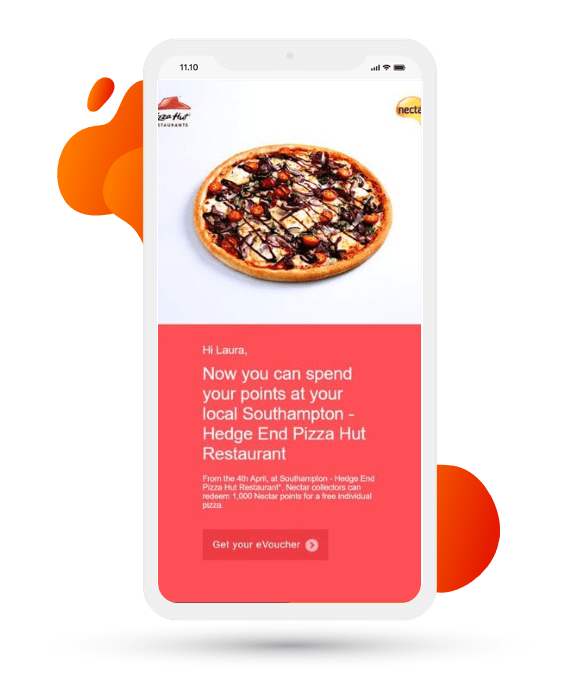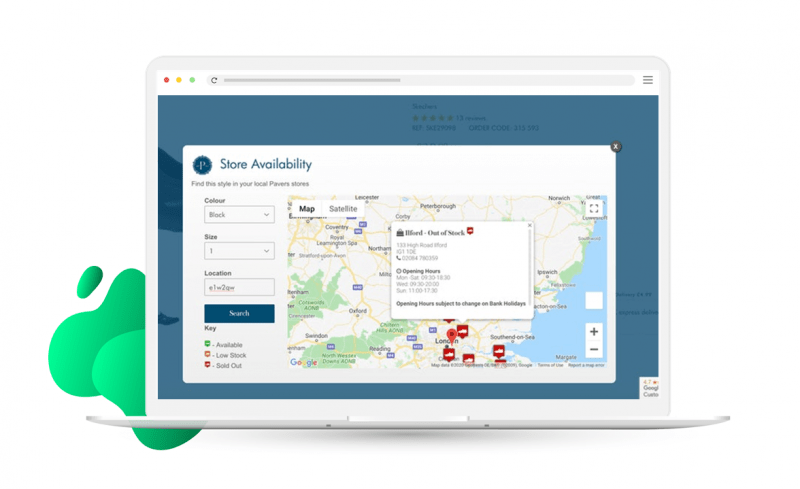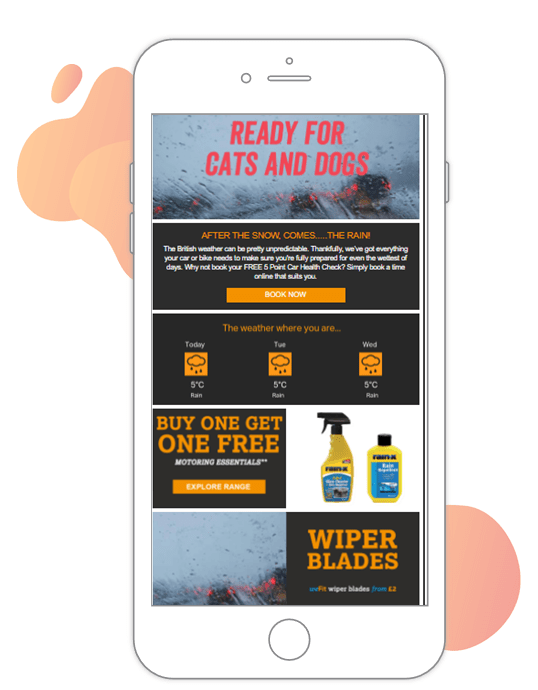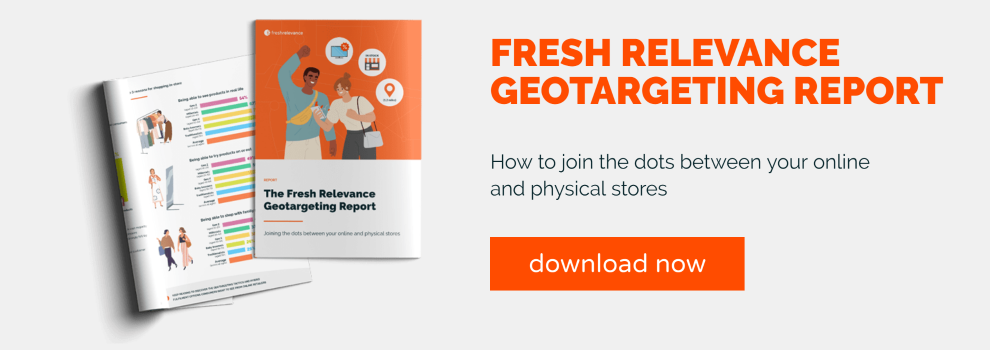The ability to be in the right place at the right time with the right message is the ultimate goal for any marketer. After all, the better you understand an individual’s behavior and interests, the more relevant and helpful communications will be.
The impact is even bigger when you combine this information with context around a customer’s location. With geotargeting, marketers have a huge opportunity to connect with customers on a deeper level, since an individual’s physical location has a big influence on their interests and needs when engaging with your marketing emails or website. This ultimately leads to a more tailored experience, which in turn makes shoppers’ lives easier and encourages a purchase.
Read on for 4 geotargeting tactics to improve the customer experience, with use cases for eCommerce and travel businesses.
For more insights into which geotargeting tactics consumers want to see, download the Fresh Relevance Geotargeting Report.
Download now: The Fresh Relevance Geotargeting Report
1. Nearest store information
Despite the convenience and rapid growth of online shopping, brick-and-mortar stores still play an essential role in many customer journeys. In fact, research from the Fresh Relevance Geotargeting Report found that over half of consumers (57%) shop online but prefer to purchase certain products in-store, such as furniture and footwear.
Marketing teams need to have geotargeting tactics in place so that customers receive a joined up experience, wherever they interact.
Incorporating details of the nearest store on your website and in marketing emails is an effective way to boost conversion rates by equipping customers who prefer to shop in-store with the information they need to make a purchase. More than 1 in 3 consumers want online retailers to display information about their nearest store, making this an essential geotargeting tactic to try.
In this email, Nectar suggests local restaurants where customers can redeem their loyalty points.

Geotargeting also works well when promoting a local store event. This avoids wasting precious digital marketing real estate for customers who are too far away from that store.
For example, a women’s fashion retailer may want to drive customers to a particular in-store women’s fashion experience at their London Oxford Street outlet. Using customer data, the brand can target those who have been interested in women’s fashion previously and who are within the influence of the store experience.
2. Recommending products that are nearby
Sharing useful details such as the opening hours and directions to a customer’s nearest store might be the more common use of location-based marketing. But geotargeting can take personalization much further by matching a product’s location with a shopper’s location and behavior.
You can customize email and website content to only display products available in the customer’s nearest store, based on the location at the time of browsing. By matching customer data with product data to inform product recommendations, you avoid frustrating your customers. No one wants to travel to a store only to find that the product they looked at online isn’t available.
Beyond retail, travel businesses can highlight flights to an individual’s browsed destination from their nearest airport. Recruiters could also use this tactic to highlight jobs within a job-hunter’s commuting distance.
In this example, Pavers shows a product’s in-store availability on the product detail page. But with the right technology, this kind of data can be used to fuel product recommendations on websites and in emails.

More than 1 in 4 consumers want online retailers to show them recommendations for products that are available at their nearest store, so consider implementing this tactic in your marketing.
3. Recommending products based on weather in current location
The weather in a shopper’s location is likely to impact their interest in certain products. If rain is pelting their window and they can see nothing but grey sky, they’re likely to be more receptive to recommendations for boots rather than sandals, for example.
In fact, almost 1 in 4 consumers want online retailers to show them recommendations for products that are appropriate for the weather in their current location.
In this example, Halfords use their banner to display a rain-splattered car window with relevant text when it’s raining in the recipient’s location, using the rest of the email to promote products such as wiper blades.

Travel businesses can also jump on this tactic too. On a wet and windy day, consumers might be more receptive to a marketing email from you highlighting the weather in the Bahamas with details of flights departing from their nearest airport.
4. Targeting customers based on the influence of a certain location
A shopper’s location isn’t always clear cut. For example, a person’s nearest store might not be the one that’s easiest for them to get to – another store might be easier for them to reach due to its proximity their place of work. Marketers should take this into consideration and leverage information from offline purchases, for example data from the customer’s loyalty card, as well as a store’s catchment area when defining the preferred store for each shopper.
Keeping shoppers up-to-date about their favorite store isn’t the only usage scenario for using geofencing. Savvy marketers can also engage consumers within the geographical vicinity of competitors. Burger King famously took on McDonald’s using this approach, where customers within 600 feet of a McDonald’s were given the opportunity to order a Whopper for a reduced price and then received directions to their nearest Burger King to collect their meal.
much needed update pic.twitter.com/H5v092C9RE
— Burger King (@BurgerKing) December 6, 2018
Understanding a customer’s context is critical for providing an experience that will resonate and drive greater response. Location is an important aspect when it comes to personalization, and thanks to developments in marketing tech, incorporating this data into marketing is no longer the manual process it used to be.
By combining location-based marketing with behavioral targeting, brands can deliver smarter content and offers to customers. And the more helpful a message is perceived by the customer, the more likely they are to purchase and keep coming back.
A note on the iOS 15 Apple Mail privacy updates
The Apple updates will have implications for technology that relies on opening IP addresses for location-based content, which have long been viewed as invasive in the industry.
Since email IP geotargeting is notoriously unreliable, Fresh Relevance has always given our clients many more accurate and ethical ways of understanding a recipient’s location, including website IP tracking and integrations into CRMs (think delivery address). This means with Fresh Relevance, you’ll still be able to engage subscribers who use Apple Mail with location-based content, regardless of the privacy updates.
Learn more about the Apple Mail updates
Download the Fresh Relevance Geotargeting Report for more insights straight from consumers’ mouths about what they want most from a localized shopping experience and how they see the physical store fitting into the multi-channel customer journey.







